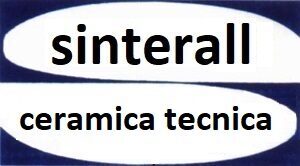Zirconium oxide (or zirconia) is the ceramic oxide of zirconium, characterized by the chemical formula ZrO2. Zirconia, an odorless white powder at room temperature, is a polymorphous crystalline substance. Up to 1170 ° C it has a monoclinic crystal structure, between 1170 °C and 2370 ° C it has a tetragonal crystal structure and above 2370 ° C it has a cubic crystal structure. The melting point is at 2680 ° C.
During the heating process, the transformation from the monoclinic structure to the tetragonal structure is rapid and occurs with a volumetric contraction of about 5%.
During the cooling process,( which is the opposite operation) the transformation from the tetragonal structure to the monoclinic structure occurs with an equally rapid volumetric expansion. This behavior during cooling destroys or compromises the structure of the components just made and makes pure zirconia unusable for any form of application.
TECHNICAL DATA SHEET: ZIRCONIUM OXIDE
There are some oxides which can be dissolved in the crystalline structure of zirconia and therefore slow down or eliminate the changes of crystalline structure. MgO, CaO and Y2O3 are frequently used additives and, when in sufficient quantities, can maintain the cubic structure up to room temperature.
This material, at first glance fragile, has interesting properties in the industrial field, such as resistance to acids and low thermal conductivity (with a value among the lowest in the ceramics currently available), good resistance to thermal shocks, remarkable resistance to bending, good toughness and fracture resistance, low coefficient of friction. It is used in many fields, such as electronics and mechanics, industrial cutting blades, as well as in the biomedical sector as a grafting material.
CHEMICAL-PHYSICAL PROPERTIES
Zirconia is currently used in many fields thanks to a set of chemical-physical properties that make this material suitable for various applications. The main characteristics of zirconia are:
- Good thermal stability
- Low thermal conductivity
- Good resistance to corrosion in both acidic and alkaline environments
- Remarkable resistance to bending and to fracture
- Excellent degree of hardness combined with a low coefficient of friction
- Excellent biocompatibility: zirconia is used for biomedical applications, especially
in the dental sector for its excellent flexural strength, as well as not presenting
the phenomenon of rejection when in contact with living tissues.
The negative characteristics are fragility and poor resistance to thermal shocks

